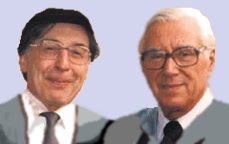|
不孕/不育 |
|
抗不孕/不育
|
|
輔助生殖技術(ART):試管受精 |
 |
|
左:羅伯特•愛德華茲;右:派翠克
C.斯德普濤。試管授精的先驅。
Left:
R. Edwards
Right;
P.C. Steptoe.
Pioneers of In Vitro Fertilization.
|
|
|
第一個“試管嬰兒”
起初,發展試管嬰兒技術是為了幫助輸卵管堵塞或輸卵管缺陷的婦女生育。方法是用簡單的外科探查技術(腹腔鏡探查),直接從卵巢獲取成熟的卵子,在體外受精,然後繞過輸卵管,直接把經過體外發育的受精卵重新送進子宮。該項技術於1970年代由英國產科醫生派翠克
C.斯德普濤
(1913-88)和生物學家羅伯特•愛德華茲(1925-
)所完善。結果於1978年,誕生了第一個“試管嬰兒”。從此以後,有成千上萬的試管嬰兒誕生了。可是,用簡單的技術,諸如激素替代療法或人工授精技術,就能夠幫助和正在幫助大多數想要孩子的不孕/不育夫婦。 |
|
Infertility |
|
Methods
of Overcoming Infertility
|
|
Assisted
Reproductive Technology (ART): In
Vitro Fertilization |
The First "Test Tube Baby"
The technique in vitro fertilization was originally developed to help women with blocked or defective Fallopian tubes. Using a simple invasive surgical technique (laparoscopy), mature eggs were removed directly from the ovaries, fertilized outside the body, and then, bypassing the Fallopian tubes, re-inserted directly into the uterus. This method was perfected in the 1970s by the English obstetrician
Patrick C. Steptoe (1913-88) together with the biologist
Robert Edwards (1925- ). As a result, in 1978, the first "test tube baby" was born. Since then, thousands of others have followed. However, most infertile couples wanting children can and are being helped with simpler techniques such as hormone therapy or artificial insemination. |